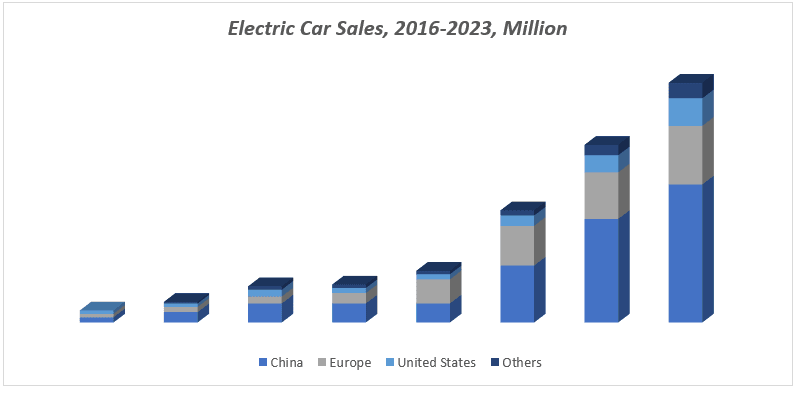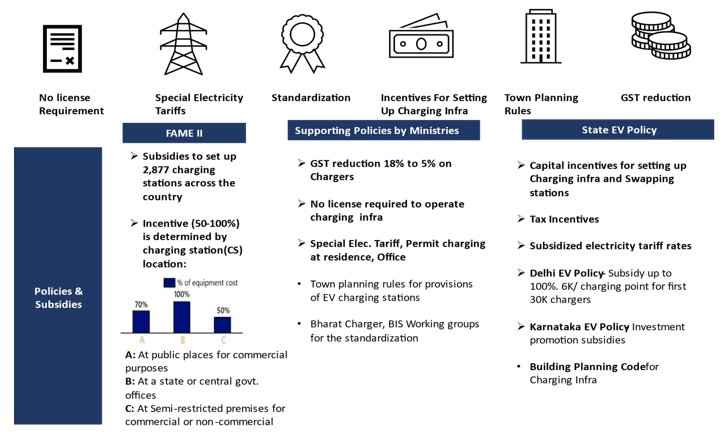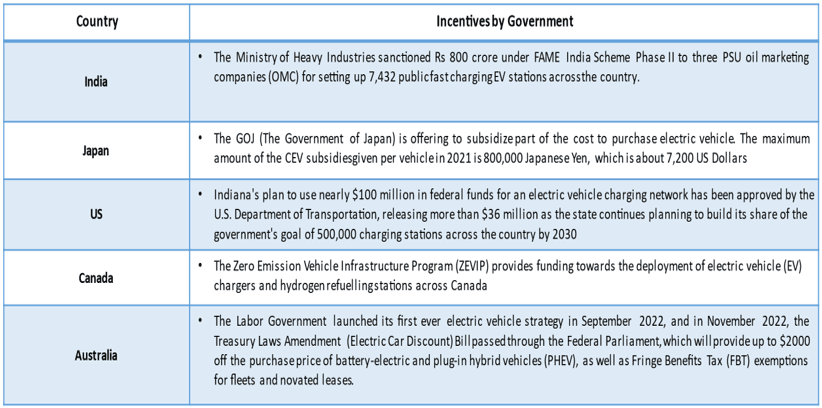- Home
- About Us
- Industry
- Services
- Reading
- Contact Us
Paving the way to net zero in the automotive industry with electrification and decarbonization
Author: Vikas Kumar
December 23, 2023
Abstract: The world’s automotive industry is at a critical turning point, facing an urgent imperative to decarbonize and mitigate climate change. Electric vehicles (EVs) and decarbonization are the twin pillars of the industry’s sustainable future. In this article, we dive deep into the topic of automotive electrification & decarbonization, exploring the current state of affairs, key challenges, advances in technology, policy efforts, and the collaboration needed to move the industry towards net-zero emissions.
Access sample report (including graphs, charts, and figures): https://univdatos.com/get-a-free-sample-form-php/?product_id=5337
Introduction: The automotive industry is one of the world’s most innovative and forward-thinking industries, but it’s also one of the biggest emitters of greenhouse gases. As the world faces an urgent need to decarbonize and mitigate climate change, the automotive industry is going through a major transformation to electrify and decarbonize. In this white paper, we look at the multi-faceted path to net-zero emissions for the automotive industry.
The Current Landscape: The current state of the automotive industry is marked by several key trends and challenges:
- Emissions Reduction Imperative: Governments around the world are enforcing strict emissions standards, pushing automakers to adopt cleaner technologies.
- Consumer Demand for Electric Vehicles (EVs): As consumer preferences shift, the demand for electric vehicles (EVs) is on the rise. This is due to a variety of factors, including environmental awareness, incentives, and advances in technology.
- Technological Advancements: Electric vehicles have made significant progress in terms of battery technology, extended range, and the development of charging infrastructure.
Electrification: The Heart of the Transformation
The automotive electrification movement has been propelled by the emergence of electric vehicles (EVs). These vehicles are equipped with batteries that store electricity, thus significantly reducing or eliminating exhaust emissions. The path to electrification encompasses a variety of
- Battery Technology: The development of battery technology has had a significant impact on the range and performance of electric vehicles (EVs). The development of lithium-ion (LNB), solid-state (SSB), and new chemistries are having a major impact on the future of EVs.
- Charging Infrastructure: The proliferation of charging infrastructure is alleviating range constraints and making electric vehicle (EV) ownership more feasible.
- Market Adoption: Major automotive manufacturers are making a commitment to electrifying their fleets. Electric vehicle (EV) startups are contributing to a diversified market.

Challenges and Solutions
There are a lot of obstacles to overcome when it comes to electrifying the world and reducing carbon emissions.:
- Charging Infrastructure: The development of a reliable, comprehensive, and cost-effective charging infrastructure is essential for the expansion of the electric vehicle market.
- Battery Sustainability: In order to reduce the environmental impact of electric vehicles (EVs), it is important to ensure the sustainability of battery manufacturing and recycling.
- Supply Chain Constraints: Global supply chain disruptions, like the semiconductor shortage, have affected automotive production and need to be addressed.
- Affordability: As electric vehicles (EVs) have become more cost-effective, they still present a challenge in terms of upfront costs. However, incentives and economies of scale have helped to alleviate this issue.
Unlock Insights: Receive a Sample Research Report on the Zero Emission Vehicle Market –https://univdatos.com/report/zero-emission-vehicle-market/
Government Initiatives and Policies
Governments have a critical role to play in expediting the transition to electric vehicles and reducing carbon emissions in the automotive industry.:
- Emissions Standards: Stringent emissions standards and CO2 pricing mechanisms incentivize automakers to produce cleaner vehicles.
- Incentives: With tax credits, rebates and grants, consumers are encouraged to buy electric vehicles.
- Charging Infrastructure Investment: Governments are stepping up their game when it comes to charging networks, which is helping to cut down on one of the biggest obstacles to getting electric vehicles.
- R&D Funding: Funding innovation through research and development (R&D) in battery technologies and sustainable materials.
Policies and Subsidies for charging infrastructure

The Role of Renewable Energy
In order to meet the objective of decarbonization, it is necessary to transition to renewable energy sources in order to generate electricity for electric vehicles. By incorporating solar energy, wind power, and other forms of renewable energy into the automotive sector, a significant reduction in carbon emissions can be achieved.
- Consumer Adoption and Education: Consumer adoption is the most important factor when it comes to electrification. It’s all about educating people about electric vehicles, making sure charging infrastructure is up to scratch, and offering incentives.
The Path Forward
In order to achieve net zero emissions in the automotive sector, stakeholders must take into account the following strategies.:
- Collaboration: The development of sustainable solutions and the utilization of incentives must be a shared responsibility among manufacturers, suppliers, governments and research institutions.
- Investment: Investing in renewable energy sources, battery technologies, and electric vehicle infrastructure is essential for success.
- Education: It is essential to remain up-to-date with the most recent developments in the field of electrification and carbon reduction in order to make informed decisions.
- Sustainability: It’s important to make sure everything in your supply chain is sustainable, from where you get the materials to how you make them and how you recycle them.
- Policy Advocacy: It is essential to collaborate with policy makers to promote policies and incentives that are in line with business objectives in the age of electrification.

Conclusion
It can be concluded that the automotive industry is in the process of undergoing a major transformation to electrify and decarbonize, necessitated by the need to reach net zero emissions. The electrification of vehicles, with an emphasis on electric vehicles, is leading the way, aided by the advancement of battery technology and the development of charging infrastructure. Government actions and policies are having a significant impact on the industry, while renewable energy is the key to achieving true decarbonization.
Consumer acceptance and education are essential elements; stakeholders must collaborate to overcome obstacles and take advantage of opportunities as we embark on this transformative journey. We envision a future in which the automotive industry contributes not only to a cleaner environment, but also stimulates innovation, economic development, and sustainable mobility for all.
The path to net zero is not an easy one, but it is a path that provides a more promising future for the automotive sector and the global environment.
As we move forward, we invite you to connect with us to explore how our expertise can help your organization navigate the complexities of automotive electrification and decarbonization. Together, we can drive positive change and work towards a net-zero emissions future.
Get a Callback
